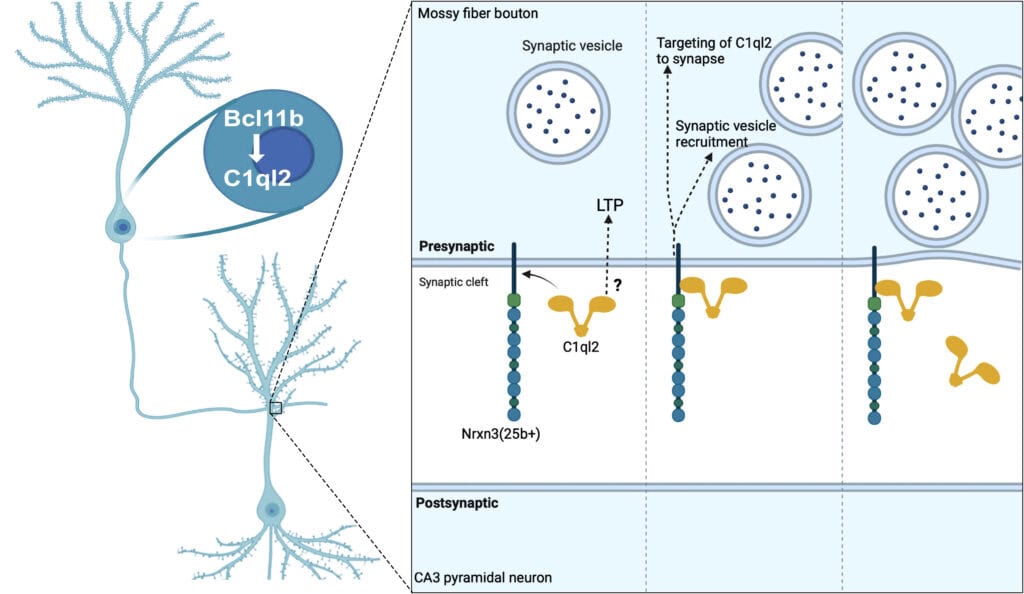Dr. Artemis Koumoundourou from the research lab of Prof. Stefan Britsch, Institute of Molecular and Cellular Anatomy, at Ulm University has been awarded the Quarterly Publication Award (QPA) I/2024 of the Anatomische Gesellschaft for the identification of a Bcl11b/C1ql2/Nrxn3(25b+)-dependent pathway regulating the function of hippocampal mossy fiber-CA3 synapses.

The human brain contains billions of neurons working together to process the vast array of information we receive from our environment. These neurons communicate at junctions known as synapses, where chemical packages called vesicles released from one neuron stimulate a response in another. This synaptic communication is crucial for our ability to think, learn and remember.
However, this activity depends on a complex interplay of proteins, whose balance and location within the neuron are tightly controlled. Any disruption to this delicate equilibrium can cause significant problems, including neurodevelopmental and neuropsychiatric disorders, such as schizophrenia and intellectual disability.
One key regulator of activity at the synapse is a protein called Bcl11b, which has been linked to conditions affected by synaptic dysfunction. It plays a critical role in maintaining specific junctions known as mossy fibre synapses, which are important for learning and memory. One of the genes regulated by Bcl11b is C1ql2, which encodes for a synaptic protein. However, it is unclear what molecular mechanisms Bcl11b uses to carry out this role.
To address this, Artemis Koumoundourou from the lab of Stefan Britsch at Ulm University together with their colleagues from the labs of Bernd Heimrich at the University of Freiburg, of Andreas Draguhn at the University of Heidelberg and of Markus Missler at the University of Münster explored the role of C1ql2 in mossy fibre synapses of adult mice. Experiments to manipulate the production of C1ql2 independently of Bcl11b revealed that C1ql2 is vital for recruiting vesicles to the synapse and strengthening synaptic connections between neurons. Further investigation showed that C1ql2’s role in this process relies on interacting with another synaptic protein called neurexin-3. Disrupting this interaction reduced the amount of C1ql2 at the synapse and, consequently, impaired vesicle recruitment.
These findings will help our understanding of how neurodevelopmental and neuropsychiatric disorders develop. Bcl11b, C1ql2 and neurexin-3 have been independently associated with these conditions, and the now-revealed interactions between these proteins offer new insights into the molecular basis of synaptic faults. This research opens the door to further study of how these proteins interact and their roles in brain health and disease.